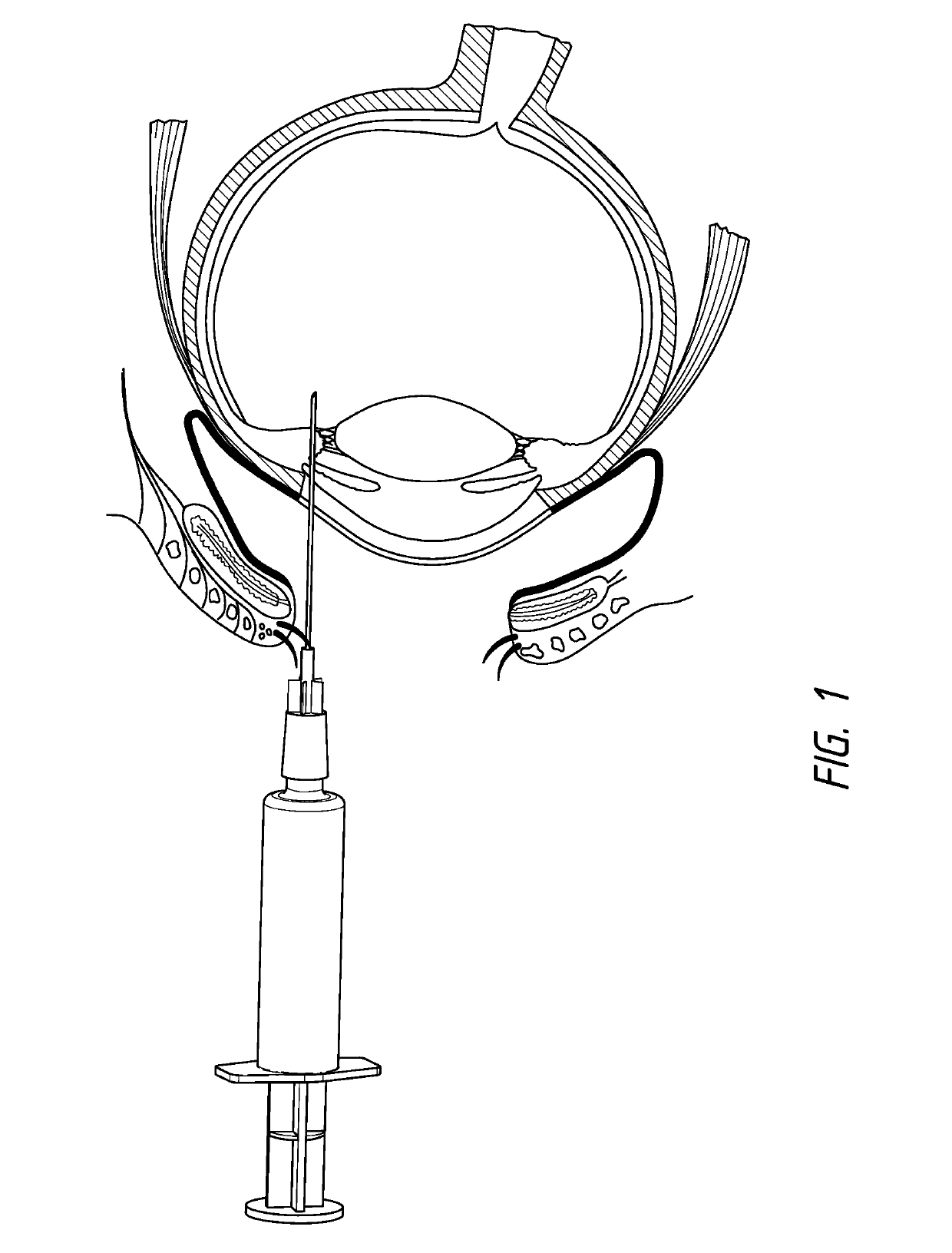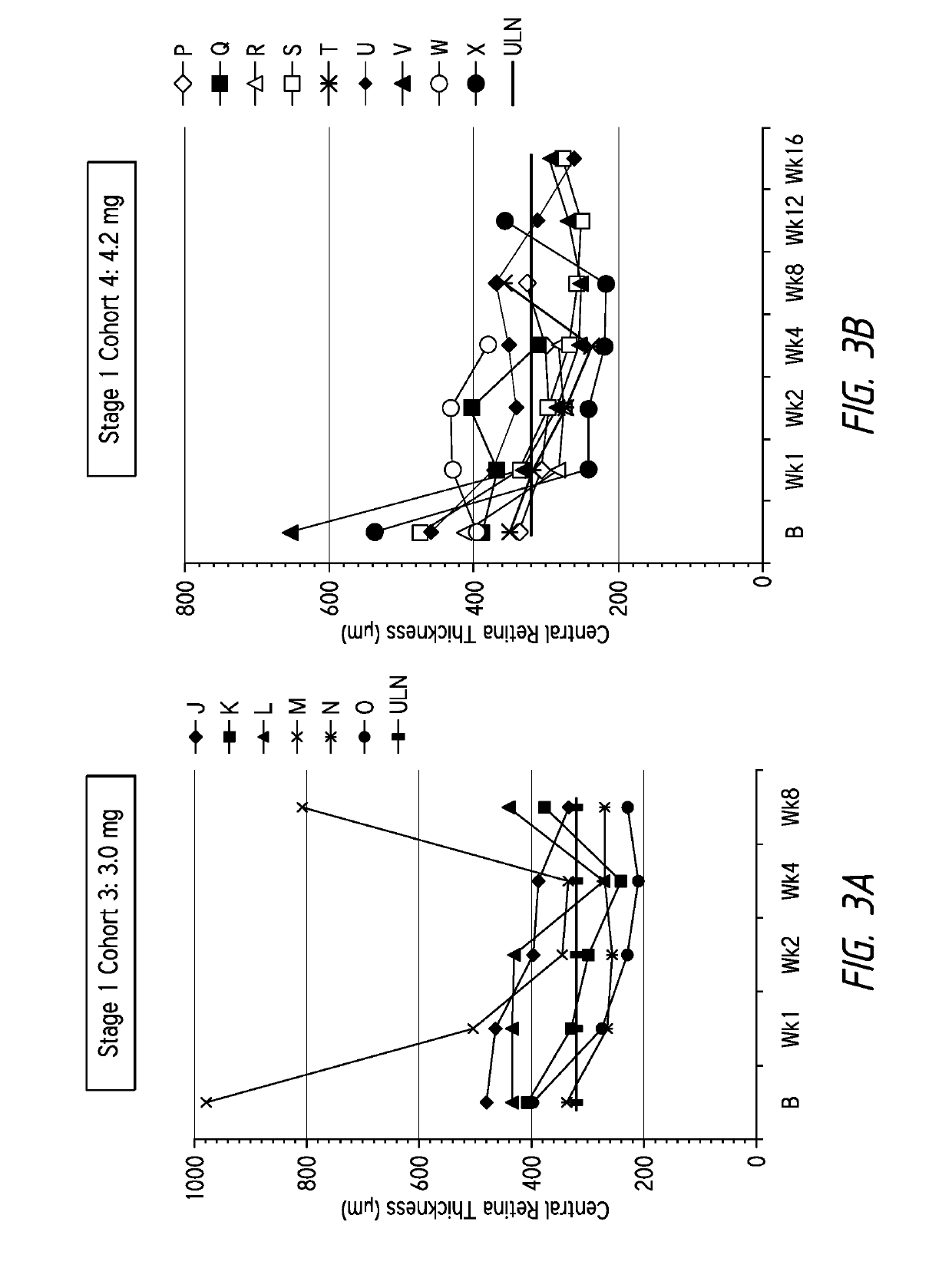Method of treating AMD in patients refractory to anti-VEGF therapy
a technology of anti-vegf and amd, which is applied in the direction of drug composition, peptide/protein ingredients, sense disorder, etc., can solve the problems of affecting the function of the retina, affecting the function of the senses, and forming scars in the area that was previously occupied by photoreceptors
- Summary
- Abstract
- Description
- Claims
- Application Information
AI Technical Summary
Benefits of technology
Problems solved by technology
Method used
Image
Examples
example 1
Treatment of Patients Refractory to Existing Treatments
Several patients suffering from age-related macular degeneration who were refractory to ranibizumab (LUCENTIS®) or bevacizumab (AVASTIN®) therapy were treated via injection of a composition according to the invention comprising the ankyrin repeat domains of SEQ ID NO: 3. The compositions were all dissolved in PBS and administered via intravitreal injection in a 50 μl to 70 μl volume
Three patients received 1.0 mg injections of the composition dissolved in PBS and administered via intravitreal injection in a 50 μl volume, the retinal thicknesses of the patients receiving the injections over time are shown in FIG. 2a. The patients' retinal thicknesses were determined using spectral domain optical coherence tomography (“OCT”). These patients were refractive to existing VEGF therapies.
As illustrated in FIG. 2a, patients A and C surprisingly demonstrated a cumulative reduction in central retinal thickness from baseline after receiving...
example 2
Duration of Treatment Effect
FIG. 4 is a diagram that describes that binding affinity and vitreous half-life define the duration of effect of a VEGF inhibitor. The figure describes the half life and duration of treatment effect of two different dosage concentrations of recombinant binding proteins according to the disclosure herein (referred to as “DARPin”) as compared to ranibizumab (LUCENTIS®). As is illustrated in FIG. 4, both DARPin dosages demonstrate a longer half life and longer duration of treatment effect as compared to ranibizumab.
Although this invention has been disclosed in the context of certain embodiments and examples, it will be understood by those skilled in the art that the present invention extends beyond the specifically disclosed embodiments to other alternative embodiments and / or uses of the invention and obvious modifications and equivalents thereof. In addition while the number of variations have been shown and described in detail, other modifications, which a...
PUM
| Property | Measurement | Unit |
|---|---|---|
| molecular weight | aaaaa | aaaaa |
| molecular weight | aaaaa | aaaaa |
| molecular weight | aaaaa | aaaaa |
Abstract
Description
Claims
Application Information
 Login to View More
Login to View More - R&D
- Intellectual Property
- Life Sciences
- Materials
- Tech Scout
- Unparalleled Data Quality
- Higher Quality Content
- 60% Fewer Hallucinations
Browse by: Latest US Patents, China's latest patents, Technical Efficacy Thesaurus, Application Domain, Technology Topic, Popular Technical Reports.
© 2025 PatSnap. All rights reserved.Legal|Privacy policy|Modern Slavery Act Transparency Statement|Sitemap|About US| Contact US: help@patsnap.com



